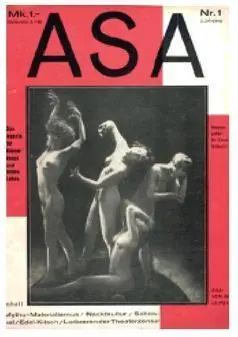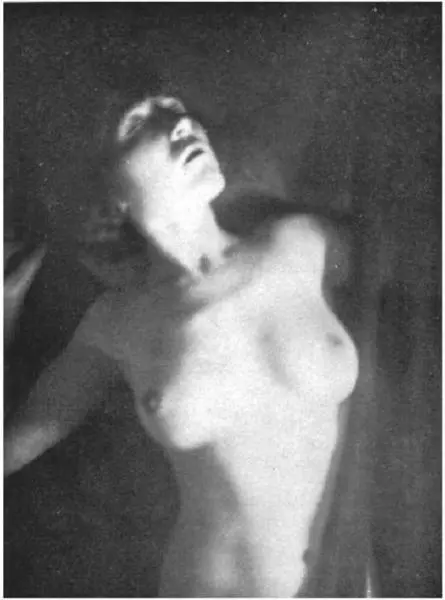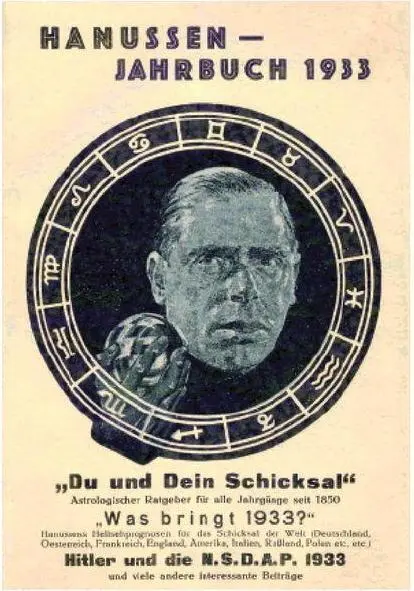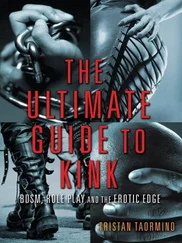Hanish’s students were instructed to laugh and smile without lapse throughout their waking days. A telepathic readiness enabled them to read character by a mere handshake or by listening to slight changes in vocal pitch. More menacingly, the adherents were subject to detoxifying Mazdaznan needle “machines,” which pricked the skin and caused infectious blisters to erupt. Extraction of the bloody pus further cleansed the bodies of the mental warriors.
A Mazdaznan House and two Mazdaznan restaurants opened in 1929 in Berlin. They attracted artist types, including Bauhaus students, and radiant Hanish believers from Leipzig and other urban centers. Sexually it was unclear what the Mazdaznans practiced. It was said the chaste, unigowned initiates engaged in polymorphous orgies. Only Hanish knew for certain. He wrote that sexual desire was linked to electrical vibrations emanating from the outer cosmos and the earth’s core. Mazdaznan purification augmented their planetary charge.
By 1932, Hanish’s cult claimed some 70,000 members in eight countries but the movement was dogged by serious internal strife and scandal. Over one dozen wealthy enthusiasts had died under mysterious circumstances, following fasting sessions, “baptisms” in ox blood, and the transdermal applications of “cleansing oils.” A large number of the Mazdaznan inner circle suffered complete mental breakdowns or suicides.
Worst of all, two young converts, Hanish’s “adopted children,” initiated million-dollar legal suits in Leipzig and Los Angeles against their Man-God for sexual abuse. The Swiss girl (11 years old) and the Swiss boy (16) were part of eight-children teams being prepared for the Mazdaznan priesthood in each local temple. After solitary diets of milk and rose petals (for the girls) and beer and white grapes (for the boys), the naked youngsters were led into marital chambers for mutual deflowering. Under the watchful eyes of Hanish’s purple-fezed cardinals, the children engaged in ritual intercourse. As soon as the girls were led from the sanctified rooms, the boys were then sodomized face down by the Master himself or one of his elderly stand-ins.
Hanish died in 1936, the year his organization was banned and shuttered by the Nazis. Mazdaznanism continued in Switzerland and Southern California, where it still draws fourth-generation scrubbed and smiley-faced zealots.

Ernst Schertel’s Dreamtheater, 1929
Hypnotic and Paranormal Suggestion
From its shady origins in pre-revolutionary France and through the nineteenth century, Mesmerism and hypnosis in Central Europe were long associated with erotic hijinks and female sexual submission. The archetypal hypnotist-master not only extracted memories and extreme emotions from his unconscious patients, he could also control their physical bodies and secret desires. Compliant subjects displayed the mesmerist’s demonic power over them when their nipples extended to unnatural lengths or their faces contorted in orgasmic ecstasy. Hypnotic suggestion onstage or off was the ultimate act of male seduction and public voyeurism.


Clownismus and Attitude Passionelle , 1927
Ernst Schertel’s Magic Dreamtheater
Dr. Ernst Schertel blended clinical Mesmer-like techniques with nudity and Ausdruckstanz . He issued dozens of scientific-sounding manifestos on naked trance-performance as mankind’s primordial art form and created a permanent dance troupe to prove it.
In 1910, Schertel received his doctorate in philosophy from the University of Jena. An amateur anthropologist, he traveled to North Africa and the Middle East, where he observed Arab and Berber puberty initiations and various rites of passage. Back in Germany, Schertel aestheticized his newly realized erotic theories into pop novels and film features. In the waning months of the Great War, he founded Wendes, the first of several publishing houses, where his notions of the occult, naked dance, hysteria, and communal worship led to a common prehistoric origin.
Schertel’s magnum opus, Magic: Its History, Theory, Practice (Prien: Anthropos, 1923), was a revolutionary treatise that intrigued many German intellectuals, including Adolf Hitler. (The Führer’s personal copy in Brown University’s Rare Book Room is filled with exclamation marks and side column scrawls.) For Schertel, all religion was based on magical thinking, which in turn functioned as a sublimation of violent carnal impulses. To torturously bind, to savagely whip, to forcefully penetrate the orifices of another body (especially the sphincter)—that is, to violate the sexual autonomy of a fellow human—led to a frenzied orgiastic celebration, the ecstatic foundation of all religious ceremony. The punishing flagellant and his acquiescent devotee corporally symbolized the struggle of the Godhead with its creation. The resulting erotic release, a shattering ritual discharge from everyday taboos, dramatized for the cult participants the holy act of sexual triumph and submission. Fetish-worship, painful sacrifice, joyous embrace with an all-powerful being—were primal experiences that could only be found in two locales: the temple altar and the brothel. According to Schertel’s provocative hypothesis, devotional rites to a deity and sado-masochist acts were intimately conjoined.
Although Schertel had experimented with hypnotic dream induction as far back as 1919, using an eleven-year-old Finnish girl as his subject, the “Dreamtheater Schertel,” an ensemble of eight nude female dancers, only surfaced publicly six years later in Stuttgart.
In Asa (January 1926) Dr. A. Bernstein wrote, Schertel’s method of work and training echoed that of the dervish teachers and yoga masters. Nude dancers were put into deep trance and then instructed to enact “motifs,” or emotional states. They began in muscularly tense, curved positions (“Clownismus”), like acrobats of the grotesque, and then emoted freely across the stage in closed-eyed groups (“Attitudes passionelles”). Schertel’s performers were trained somnambulists, fulfilling some mysterious preliterate mandate.
German critics were certainly taken with the Dreamtheater’s “dark and puzzling” experiments. The hallucinating dancers moved with feeling and esoteric purpose. Yet the naked productions lacked variety, humor, or narrative surprise. Schertel had created a new form of terpsichorean pornography but it was far too obscure to sustain itself. In 1930, the Dreamtheater Schertel folded.

The Hanussen Yearbook , 1932
Erik Jan Hanussen, The Magister Ludi of Sex
In the last years of the Weimar Republic, one man came to represent the unwholesome infusion of occult showmanship, depraved sex, personal charisma, and fascist ideology. This was Erik Jan Hanussen. For many Berliners, including Hitler’s unflagging opponents, Hanussen was not just a celebrated stage magician but also the supreme manipulator of the perilous irrationalities that exemplified their era. The Communist reporters unaffectionally tagged him the “People’s Stupifier.”
Читать дальше
















